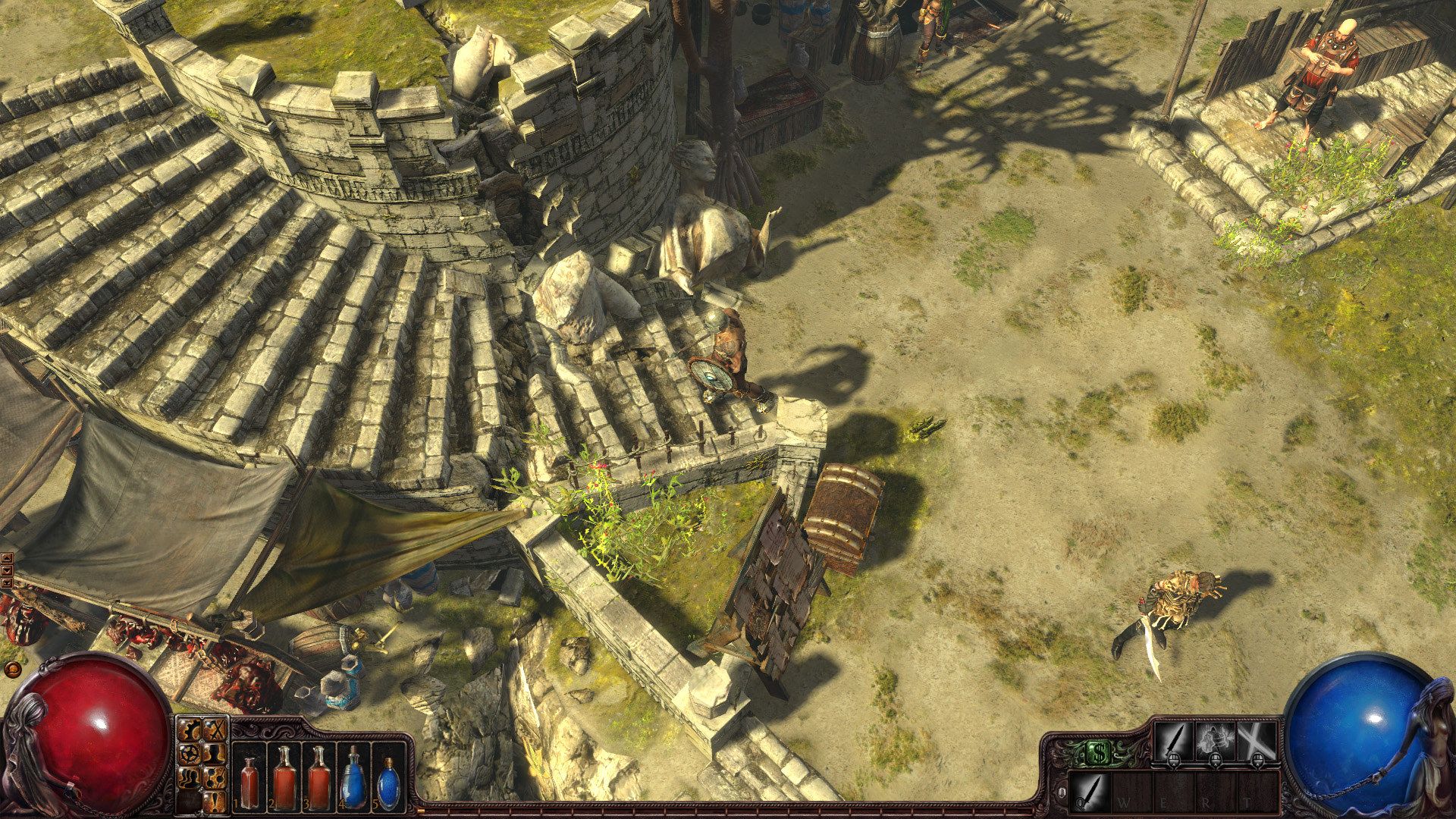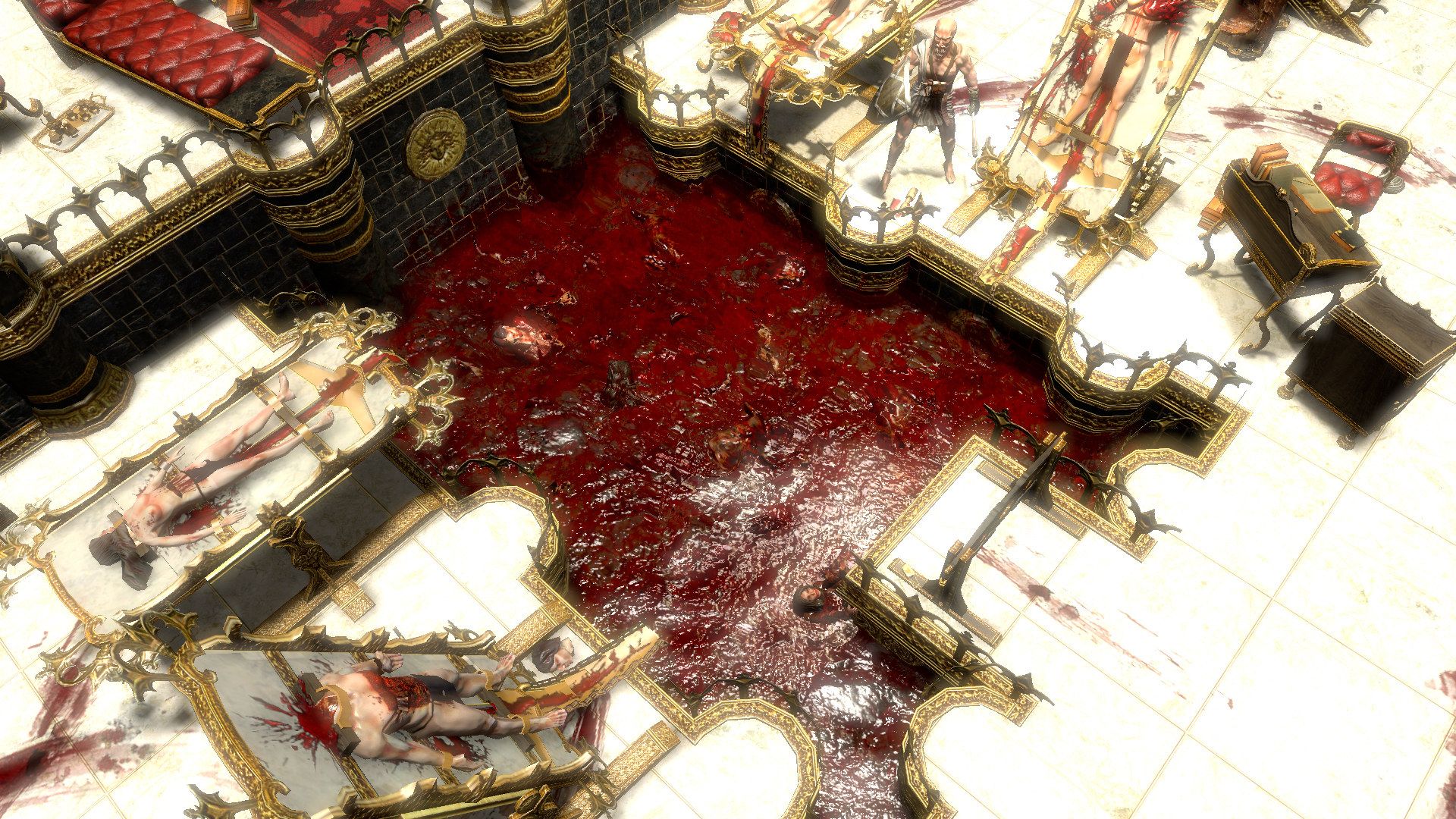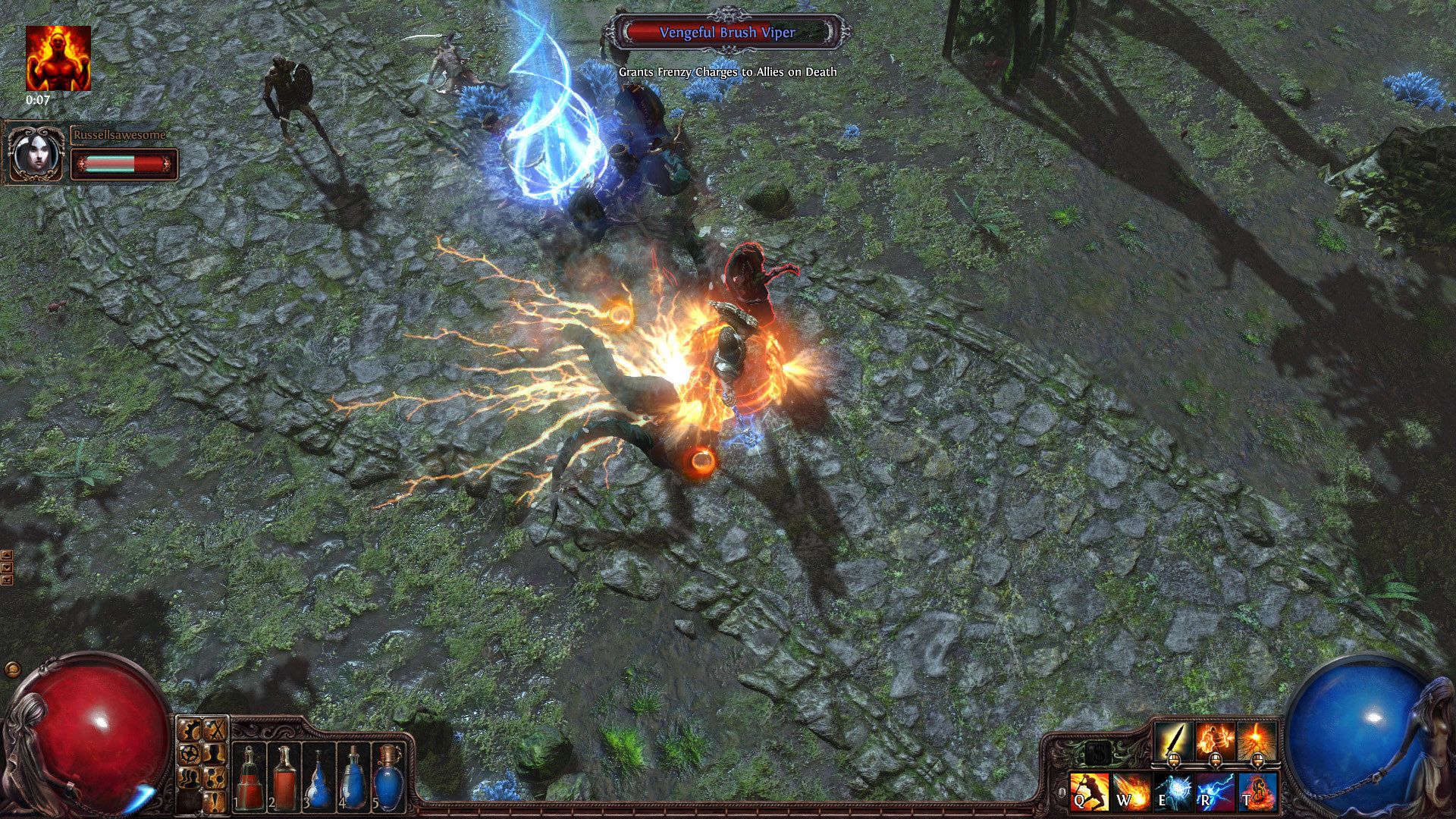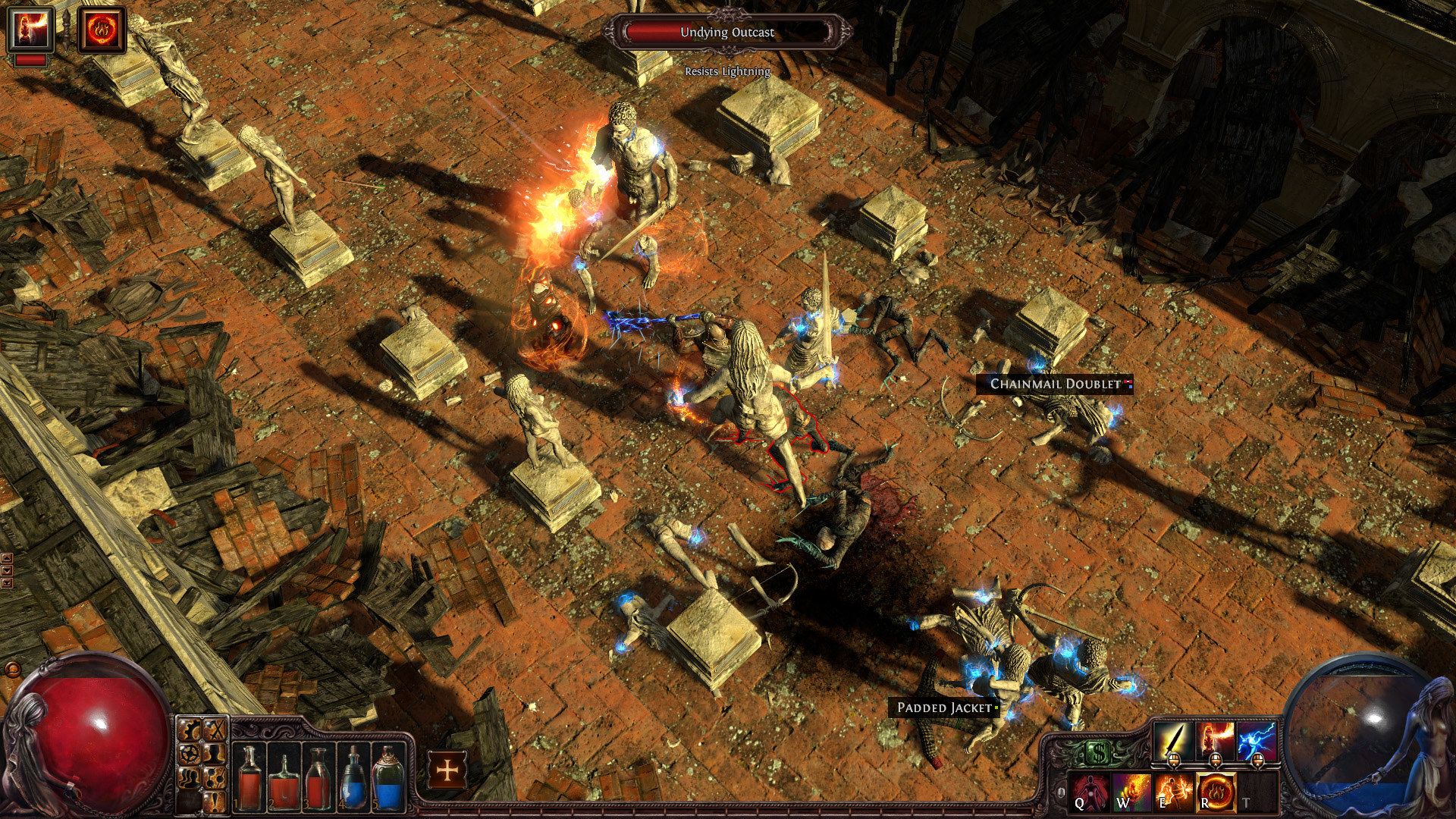With Path of Exile reaching open beta just over two months ago, we caught up with Lead Designer Chris Wilson to talk about how the response has been and what is to come with Grinding Gear Games’ incredibly ambitious Action-RPG.
[Hardcore Gamer] So we just want to congratulate you on what seems like a successful open-beta launch. Did you ever expect Path of Exile to get so big in such a short time?
[Chris Wilson] We Didn't No. We started the company literally in my bedroom before moving to my garage. It was literally a bunch of guys fresh out of Uni who keen to make a game because we really enjoyed action-RPGs like Diablo. Our initial goals were much much smaller as the game grew in popularity, we knew we were going to have a lot of players, but it still exceeded expectations. The amount of people who came from the open beta was much larger than we thought.
[HG] In the two months since launching the open beta, what lessons were you able to come away with?
[CW] We learned a lot of stuff about running large scale games like helping players protect their accounts from malware and from people who check common passwords. It was very interesting because we knew these were concerns but we didn’t realize the scale in which it could be a problem if we didn’t act on it relatively quickly. We've also learned that players really respond well to a very frequent update schedule. We pledged one update per week, which is going to include a new skill and unique items they can find, and they’ve been really liking that because it gives them a reason if they’re playing casually to check the news and try to find the new items every week.
[HG] You have to have tons of feedback just pouring in. Have there been anything specific that you’ve taken into consideration?
[CW] There is a lot of feedback, and there are some consistent messages we see. If it is a game balance thing, like something’s too powerful or something’s too weak, we try and adjust that with patches, getting players use to the fact that the game is going to change over time and hopefully rather rapidly, and we do get some feedback that some people want changed. A few things are so consistent that we’re probably going to make those changes, but there are always tradeoffs, of course, so we have to make sure it’s not just a tiny vocal minority, you know, the same thirty people posting ten times in the same thread, when the other few hundred thousand players are happy with it.
[HG] Now let’s talk about your business model. You are free-to-play, correct?
[CW] We are free. We try to not use free-to-play because it has connotations to play to win. As gamers we knew we wouldn’t want to play a game where players can get an advantage for giving money, so for example, you can buy an experience boast, it’s not fun to play in a game with another guy who has an experience boast he paid three dollars for. Our test is whether or not it feels as if it corrupts the game, and so we’ve been selling cosmetic stuff only with no functionality there. I think the only functional thing you can get is a storage space in your stash, but because the game is free, you can get as many accounts as you want so you have unlimited storage space anyways, so it’s a matter of combining it into one account that matters. We were expecting that we’d get less money per user than other gamers but so far the monetization has been very good. We attribute this to the fact that because we are one of the few companies doing this ethical model, if it were, that the players are trying to reward us by supporting us above and beyond what they would normally do. Which is very much appreciated.
[HG] Was it always going to be free?
[CW] We started designing the game in 2006, and that was the point where a lot of games out of Asia were free, and having a wide amount of success. We looked at Maple Story, for example, which has millions of players, and at this stage there were no free western games, so we thought ‘we’re going to be the first free western game; we’re going to revolution the market.’ Six years later, we certainly weren’t the first free western game, probably weren’t in the first two hundred, and it is nice that the market validated the model, but also bad that because most free games have some catch, like some content lock that you have to pay to get past a certain point or pay to make the grind less; because that is so common, free is not a good description of a game now-a-days. It invokes the wrong message to the player. I know people who won’t play a free game because they are expecting those kinds of tricks, so initially we were pushing free in our PR stuff pretty hard because it was going to be an amazing advantage we had, but now try not to mention it until it’s asked. Give it an impression it’s a boxed game until they ask how much is it and then say ‘actually, it’s free.’
[HG] Did you ever at one point during development think maybe you should sell this game?
[CW] Very recently I thought we should have sold this game. Looking back on the large amount of success, I feel it would be nice to sell the game for a few reason, not only because it would be more money, but also because people behave differently [if a game is priced at say $15] to get in. At the moment, you ban someone, they come right back. There are a lot of reasons why, for example there’s the value that is implied. If you say we’re free, you’re saying our game is worth nothing, whereas if you say our game is really expensive, there’s a certain amount of implied value there. So in retrospect, if I had known it would be have been successful, we probably would have charged upfront, but we perhaps we were only successful because we were free.
[HG] What are some of the challenges you’ve encountered working with a free model and managing micro-transactions?
[CW] We do have to care a lot about conversation rate, but the challenges are no succumbing to the temptation of doing bad things to try get their money. For example, if you made the free items tradable between the players, then the players could buy the items and trade them to people for things that actually do something in the game, allowing them to buy power. We made it so the free items can’t be traded and all of these things require clever solutions so that the players can’t abuse the system, or at least it’s fair to everyone and there’s no kind of way to pay for an advantage. An example, and this is a really specific example, is we sell different animations for certain skill effects in the game, like a new fireball looks really cool, but it doesn’t do anything differently. But one of the ones that we sell replaces a skill that summons a bunch of skeletons and it makes it so it summons stone statues instead. The player likes this because of the cool stone statues walking around but when the artist made the animation, he made it so that in the attack swing they do, the contact point where it deals damage to the enemy was actually relatively early, whereas the skeleton one it was relatively late. This meant that the paid version actually had an advantage, so we quickly had to go and fix that, at great expense at the last minute, so that there was no perceived advantage from the purchased version, and we do this so we have a fair playing field for everyone.
[HG] From the outside looking in, some instantly see influences from Diablo in the gameplay and Final Fantasy X’s Sphere Grid for the leveling system. What are some of the influences that have helped you build Path of Exile to what it is today?
[CW] The direct influences we had we were inspired by Diablo, Titan Quest and Dungeon Siege, other action-RPGs, and especially Diablo 2 (that was the best one), but we also enjoyed the other ones and we we’re very inspired by a lot of the mechanics they have. We were heavily inspired by Magic: The Gathering, it might not be obvious, because it’s a card game, but a lot of the combination of character customization that we have are very similar to the types of the things you get in Magic: The Gathering. We even refer to a lot of internal things as, for example, if you play a strength character and pick intelligence nodes or skills, we call that splashing into intelligence, because that is what a Magic card player says when they are a blue deck and they grab a red card, for example. In addition to Magic: The Gathering, we inspired by Guild Wars for server architecture because we felt like Guild Wars was way ahead of its time for how the servers worked, so we looked into that in detail and we we’ve been actually talking to some Guild Wars guys at GDC and they do some amazing stuff. And as you say, there are some Final Fantasy influences. We really liked the materia system in Final Fantasy VII and that has definitely contributed, once we decided that we were going to go with skill gems that were supported by other gems, we realized that were similar to materia, so we looked at ways we can learn lessons from how they did it. And as you said, there is a comparison to the sphere grid. I haven’t actually played Final Fantasy X myself, but I’m sure other designers have on our team.
[HG] Was there a particular design choice that classes were locked in without any changes to appearance?
[CW] The reason why we don’t have any minute customizations of changing the face and hair color is because it’s generally small on screen and covered by armor. In addition, we wanted a fix personality for the class we set; so the assassin is a ruthless killer and he has a personality and a story, so people are playing him, rather than playing themselves. Plus, no one would be able to tell if he had a piercing or something like that. We have had heavy request for alternate sex versions of the class, like a female version of the shadow, and while that is very expensive to make as you have to redo all the animations, because any class can use any weapon or any skill, you can have to do ever permutation of it, and they will have different body shapes. While that’s expensive, we will do it as a paid option so players can change to the female or male version of the class if they choose to.
[HG] In the way the game is structured, what do you consider finished? What do you consider 1.0?
[CW] We've defined 1.0 as what we’ll release later this year, approximately September, and we've set an arbitrary set of stuff we want done by then. For example, when we went into open beta, we didn't quite have a completed story for the game itself. It ends a little abruptly; there’s a final encounter, but there’s no story wrap up that goes on at the end of Act 3, so we have a section of Act 3 that we've been working on for quite some time that slots right in there to add more side areas, to add a bit more depth to it, and to finish the story off. That’s the major piece of content we’re working on for the 1.0 release. In addition, there are various platform issues, such as various bugs in the beta we have to sort out this year, things like client performance, server stability and incremental improvements before we’re ready to remove the open beta tag from it. At the moment, the open beta tag warns players that there may be some issues here and there and we’re hoping to remove it as soon as we can so we don’t fall into the trap many game fall into where keep it in beta for five years. We’d rather actually formally release it, especially because it signals to journalists, now is a good time to give us a score, rather than them not really knowing whether to review it or not.
[HG] You kind of answered my next question of, where do you go from here, but what do you want to put into the game that is well down the pipeline, past the 1.0 release?
[CW] We’re trying to expand our development speed and team over time. Now we have 22 developers plus some support staff, and within the year, we might have 50% more. We’re accelerating so that in the coming years, the next five or ten years of the development of the game, it can become a lot large, and this is because, due to being an indie project, we don’t have as much content as some of our competitors. Look at Skyrim; that is a completely gigantic game, and the only way we can really get massively lasting appeal is by trying to scale our game over time, using the money that comes from the players, of course. There are features that we have planned for future years, and one of the things we’re going to be putting on increasingly emphasis this year is our race/league system. Basically we run these little events which is like a fresh economy where you can play new characters that last anywhere one hour to one month. It’s kind of a race to see who can play through the game the fastest to get the high levels quickly, and we vary the game rules up. We make it so, for example one we tried last week, you don’t cast your skills using your mana; it uses your life instead. So you’re hurting yourself every time you use a skill and that’s an interesting twist on the game rules that’s fun for a few hours of play when you’re competing with other people with fresh characters. We’re running a schedule of these events three or four a day at the moment and the players are engaging well with them. Once you’ve played through the story and you’ve played with various characters, if you’re not the type of player who will grind for items, it gives you something to do that you’re good at, other than the ability to spend a lot of time on the game. You can actually… I don’t want to use the word “e-sport” because that’s a title that belongs to much much more e-sporty games, but a degree of competitiveness based on player skill is something that’s always useful for the longevity for this type of game and we love to push it in that direction.
[HG] Thank you for your time and we wish you the best in the upcoming future!
[CW] Thank you very much for coming!





